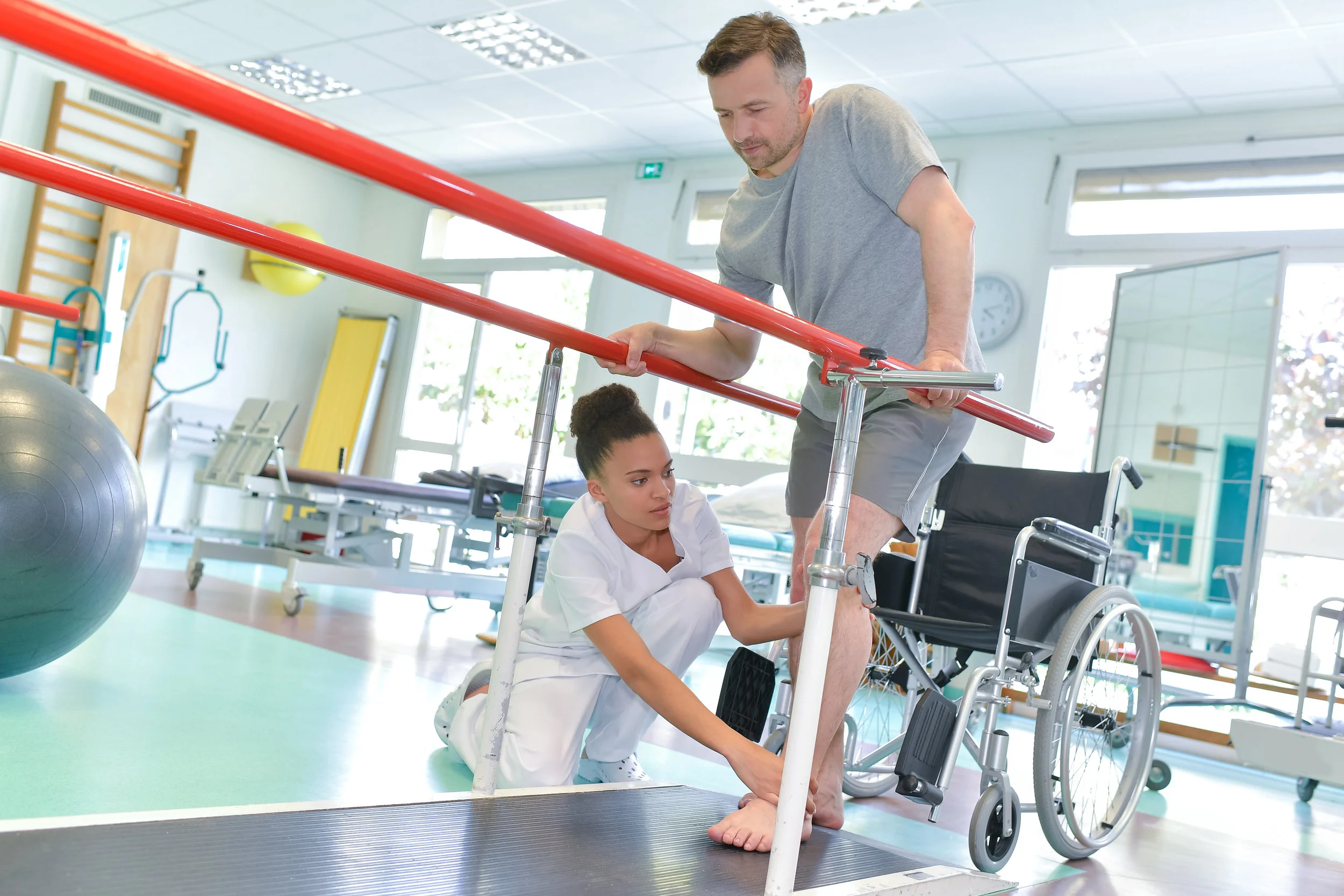"They are NOT getting me out of this bed. They just make my pain worse."
"Whew! That physical therapist worked me too hard."
"I'm just not up for occupational therapy today." (No matter that the patient was also "not up to it" yesterday, or the day before, or the day before that...)
If you're a nurse, you have no doubt witnessed these scenarios. Though it's easy for me to discount patients' complaints and reluctance to work with PT/OT, I have to admit, I have a lot in common with their attitude—especially when it comes to change.
Currently, I'm in the midst of quite a bit of change. I'm shifting careers, learning new skills in the writing world, and trying to keep up with an ever-changing healthcare system, all on the coattails of moving from Cambodia back to the United States and working through reentry. Change, like physical therapy, is difficult. As I've observed my patients in the hospital over the years, here's what I've learned about both change and physical therapy:
1. It's painful.
Some patients won't move their feet off the bed for PT/OT until they've had their pain medication. I don't really blame them. Retraining your body to stretch and move and function in a new way can be very, very painful. Change and transition can be the same: a season of retraining our bodies, minds, and spirits to try new things, form new habits, and leave the comfort zone of our beds (or homes, or jobs, or cities). Yet just like with therapy, increasing our activity in these uncomfortable areas only increases our strength and ability to thrive in new ways. It may be painful, but it's worth it.
Adobe stock photo
2. It's scary.
"Don't let me fall!!" patients will exclaim when they transfer to the chair or the bedside commode for the first time. Their legs are weak and shaky, or their balance causes them to sway. Yet the therapist is always there, providing support and holding onto them, a trustworthy safeguard even when patients doubt their abilities. Similarly, in times of transition I too am fearful, and I do my fair share of crying out to God, warning Him I'm losing my balance and am going down, fast! How often I forget He is there, holding onto me, supporting me, even if I don't believe He's strong enough to catch me. It can be terrifying to walk when we're weak because there is always the possibility we will fall, but when we take wobbly steps forward, we arrive to new and important places (like the bedside commode! Just kidding. Kind of.). It's scary, but it's worth it.
3. You'll want to quit.
To be honest, sometimes I have a hard time not judging patients for "being babies" about PT/OT.
"I can't go any farther," they state. Or, "I just can't go anymore. I just want to go back to the bed."
As the patient healthcare professionals they are, our physical and occupational therapists encourage the patients to keep going. They remind them of the benefits of therapy, and they point out how far the patients have already come. Still, some patients refuse to keep moving.
Unfortunately, with all my judging of patients, I am the same way when it comes to anything new. New location, new method of transportation, new routine, new job—anything new throws me for a loop, and like a grumpy old woman who's stuck in her ways, I sit and pout and complain that I can't go back to the way things were before. Even if "before" meant I was bed-bound and my muscles were atrophying.
Like most people, I enjoy comfort. Neither getting out of bed to retrain muscles to walk nor getting out of old routines to form new, healthier habits is comfortable. It's hard, and we'll want to quit, but it's worth it.
4. It's a process, and it takes perseverance.
I wish physical therapy only took one session to accomplish all its goals. I wish one day of accepting change completely reformatted my brain to eliminate all anxiety and stress about new things. However, both physical therapy and change involve growth, and growth is a process. Processes require time, and time requires perseverance.
Little by little, cell by cell, muscle fiber by muscle fiber and neuron pathway by neuron pathway, as we persevere our bodies and brains shift. The old, unusable junk is broken down and rebuilt into a new, healthier, stronger version of ourselves. Over time, we find ourselves able to jump higher and run faster than we did before knee surgery; we find ourselves utilizing stronger character traits of leadership, servanthood, and compassion as we relate to and lead those around us. It doesn't happen overnight; it's a process, and it takes perseverance, but it's worth it.
5. It's possible.
Though I witness many people who, like me, grudgingly swing their legs out of bed to start therapy, I also watch incredibly motivated patients work day in and day out to regain their strength. These patients focus on the positive and rarely complain. Nothing can deter them from finding something to be grateful for—including the opportunity to participate in occupational and physical therapy. Each time a therapist knocks on the door, they never refuse to get up or tell the therapist to come back later. They are willing to move forward in their healing.
Change and growth, whether physical, mental, emotional or spiritual, inevitably involve pain, fear, exasperation, and teeth-gritting perseverance. Change is all of these things, but it's possible. And it's worth it.
"Do not conform to the pattern of this world, but be transformed by the renewing of your mind. Then you will be able to test and approve what God’s will is—his good, pleasing and perfect will." Romans 12:2 (NIV, bolding mine)

